In ancient geological eras, fossils show us how life on Earth developed. Here are 30 fossil activities for kids from kindergarten to elementary school.
What Are Fossils and How Do They Form?
The fossilization of an organism after death is not an automatic process that happens for all remains. It begins with the burial of the dead organism under sediment or ash from a volcanic eruption. Then, it is affected by a whole series of biological, mechanical, and chemical processes.

Fossilization is a very rare event where several conditions must occur. Paleontology is the science that deals with studying the life of the past and does so thanks to these precious traces found. Fossils are of vital importance because they are the only witnesses to the history of life on our planet.
They represent the remains of organisms, animals, or plants. The fossils lived in geological periods before the current one. The formation of a fossil is a process also known as fossilization. It represents a somewhat unusual event that requires special conditions for it to occur.
The fossilization process requires the body of the dead organism to be protected from natural external agents and the air. Only in this way, the natural decomposition process of the animal or plant organism countered. In the presence of optimal conditions, the bodies remain intact and remain preserved for millions of years.
30 Fossil Activities for Kids
1. Summer camp
At the summer camp, children discover geological eras, learn how to prepare a fossil, and work on geological samples. We can apply the theory learned at the paleontological museum and recognize the fossils studied at the museum.

In the archaeological section, you can learn the techniques of building bronzes, discover the secrets of the ancient Nuragic populations, and apply them in the museum’s didactic laboratory.
Reconstructing the timeline and designing bronzes puts the kids in the shoes of the little archaeologist. To conclude, the didactic activity as real archaeologists carries the simulation of excavation and analysis of the stratigraphy out.
Source: https://www.myfossil.org/resources/field-opportunities/
2. Learn about marine fossils
The fossilization process can find the optimal conditions to occur even on the seabed. For example, it has preserved the body of a dinosaur lying on the seabed from decomposition thanks to the intervention of mineral substances. It replaces the porous parts of the living being and transforms them into the rock.

Source: https://www.shutterstock.com/search/marine+fossils
3. Plaster cases with salt paste
We put a layer of salt dough of 1-2 cm high in the trays. Then, we imprint the footprints or the bodies of the dinosaurs or the shells. We prepare the gypsum paste by mixing gypsum powder and water to get a rather thick Cappetta. Then pour the mixture on the salt dough.

To help the subsequent detachment of the two materials, we brush the surface of the salt dough with a veil of oil. Then pour the plaster paste into all the containers and wait a few minutes until it can completely harden.
We removed the salt dough that is still soft from the hardened plaster. So, we will get a series of negative casts that should represent the plaster equivalent of the dinosaur or the part of the leg that left the footprint. However, since these casts are dirty with salt dough, clean them briefly.
Then, after a few days, we played at being paleontologists and were equipped with a wooden toothpick again. We can clean our casts from every residue with patience and precision. Finally, we had fun painting the protruding parts of some of our casts with watercolors to give more prominence to the shapes of the dinosaurs or their footprints.
Source: https://www.littlepassports.com/craft-diy/make-dinosaur-fossils-using-salt-dough/
4. Fossil footprints in salt paste
We make a second fossil with part of the salt dough. Then, color gray with a drop of black tempera color for a more realistic, stone-like effect. Then, modeling after the Saxons, we imprint the dinosaurs in full.

By extracting the object, it can dry the imprint remaining in the salt dough in the oven at a very low temperature. Or in the air, it extends to 30 days.
Source: https://www.makelifelovely.com/diy-dinosaur-fossils-with-salt-dough/
5. Collect shells on the beach
There are several cases of shell fossils based on the mineralization process of its parts. We can keep the shell whole without changes in shape and chemical composition. For example, in the case of the beautiful pearly ammonites that have undergone few superficial alterations, the pearl having been preserved.

But only the shell can remain that becomes porous and absorbs the mineral solutions that circulate in the rock. Recrystallization occurs, and the fossil is said to have mineralized. It is the case of pyrite or pyrite fossils.
Even soft tissues can fossilize through processes of mineralization of organic matter. So, you can have some internal or external molds. If it fills the shell with material and then empties it, we get an internal mold. It is less interesting because it has lost much of the shell’s ornament.
If the sediments fill the space left by the shell, we can have the faithful reconstruction of both the inside and the outside. Another substance can replace the shell. The fossil will be a perfect reproduction of the original.
Various substances can replace the primitive material of the shell such as calcite, aragonite, silica, pyrite, oxides, carbonates, phosphates, phosphates, and silicates. Sometimes, the shell dissolves after being pressed against a substrate which subsequently hardens. The fossil will be the negative cast of the shell.
Source: https://www.follybeach.com/seashells/
6. Maxi cast of plaster with sand
We make the last cast with sand, water, and plaster. We put a layer of sand about 2cm high in some aluminum or plastic trays. Then, we pour water over it until we get the sandcastles consistency.

We then stuck the toy dinosaurs in the sand so they imprinted their footprints in the sand, and then we removed them.
We poured a cast of plaster into the mold and left to harden. For a result, once everything has been extracted from the tray and turned upside down, is a cast covered with sand. It is the only true paleontologists can do.
Source: https://www.youtube.com/watch?v=6jQpV_2Ot8Y
7. Study about the Amber Fossil
Amber Fossil is the resin produced by conifers capable of capturing the fossilized remains of animals or plants. It is not unusual to find an amber fossil.

8. Treasure hunt
The summer ends and the children engage in a playful discovery of the dinosaurs. In particular, we used the casts and fossils we talked about in the previous post for a special game. It is a treasure hunt by archaeologists.

By paleontologists, since all the clues to find the treasure would have been hidden under our fossils scattered here. It is in the extensive garden and part of the great-grandmother’s house.
Source: https://www.teacherspayteachers.com/Browse/Search:fossil%20scavenger%20hunt
9. Uniform game
First, the children must have the ideals of some simple uniforms. We are in the heart of summer and it is good with few clothes on. Then, this game will compose a small kit for archaeologists.

You can customize the famous Jurassic Park logo with our names. We printed these images on photographic paper. Therefore, it is quite consistent despite being cropped. The dinosaurs would have been the bib of archaeologists.
Source: https://www.archaeological.org/advice-for-field-school-participants/
10. Create the accessories
While we print the logo in two sizes of smaller for the caps and larger, taking a cue from a simple and nice idea found on the net, we have kept 10 rolls of toilet paper aside and painted black.
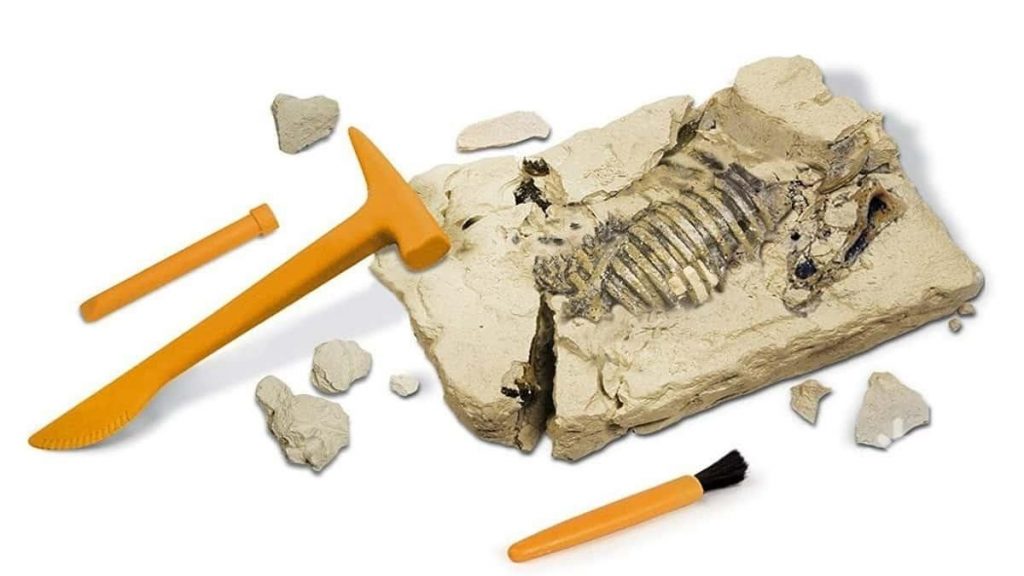
Then, equipped with this material and plastic caps, hats all the same (an advertising gadget kept aside), satin ribbons, hot glue, and double-sided tape.
We built binoculars from the black-painted toilet paper rolls. The realization is very simple, but the result is nice and very rewarding, such as two rolls, a cap, a piece of tape, and a pinch of imagination to decorate and personalize your binoculars. We then decorated the hats by gluing the custom logo onto them with hot glue.
Source: http://www.succinctresearch.com/top-15-must-have-archaeology-field-gear-items/
11. Treasure hunt version 2
Obviously, for every treasure hunt, the biggest job lies ahead. Deciding the location, identifying where hiding the various clues, planning riddles, hiding them properly, doing it in the mod, and that everything goes.

So, in the days before the hunt, you will commit to thinking about 25 riddles about as many hiding places identified in the school’s underground garden space. We will write the clues in capital letters so that everyone can easily read them. Then print and cut into a card and fold.
To make the game lively and allow children to savor the thrill of discovery and the work of archaeologists and paleontologists, there will be a couple of clues that lead to tests such as the maxi-cast of plaster covered with sand. And a first part of the treasure hidden will be in a bucket full of sand. Let’s the game begin!
Source: https://ucmp.berkeley.edu/education/explorations/tours/fossil/guide/scavengerhuntkey.html
12. Go to the beach
There are several cases of shell fossils based on the mineralization process of its parts. We can keep the shell whole without changes in shape and chemical composition. For example, in the case of the beautiful pearly ammonites that have undergone few superficial alterations, the mother-of-pearl has been preserved.
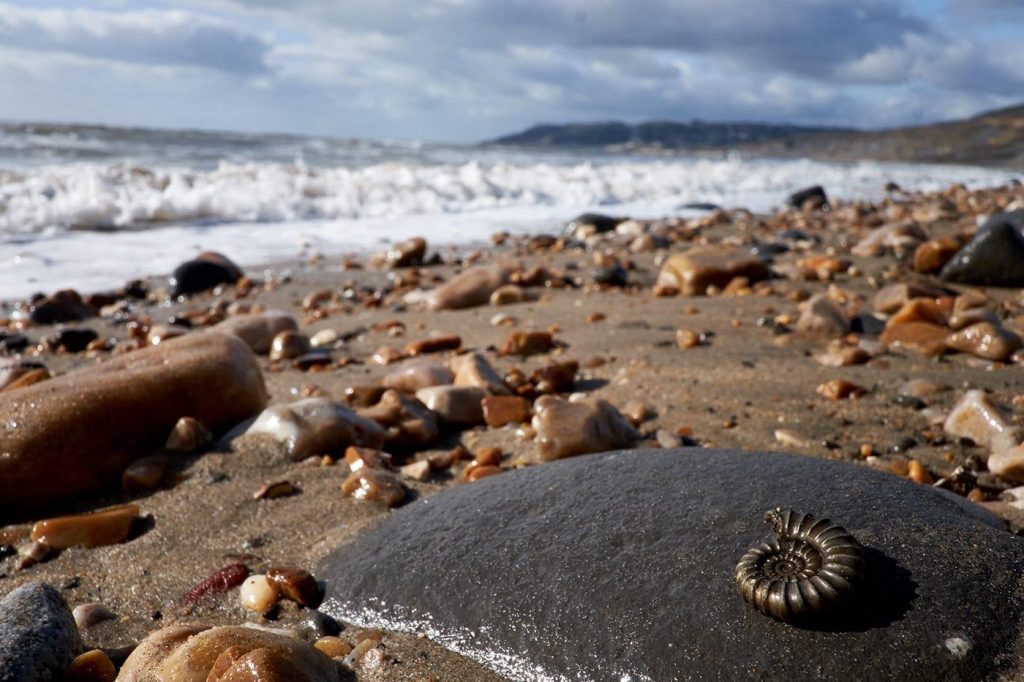
But only the shell can remain to become porous and absorb the mineral solutions that circulate in the rock. Recrystallization occurs, and the fossil is said to have mineralized. It is the case of pyrite or pyrite fossils.
Even soft tissues can fossilize through processes of mineralization of organic matter. So, you can have some internal or external molds. If it fills the shell with material and then empties it, we get an internal mold. It is less interesting because it has lost much of the shell’s ornament.
If the sediments fill the space left by the shell, we can have the faithful reconstruction of both the inside and the outside. Another substance can replace the shell. The fossil will be a perfect reproduction of the original.
Various substances of calcite, aragonite, silica, pyrite, oxides, carbonates, phosphates, phosphates, and silicates can replace the primitive material of the shell. Sometimes, the shell dissolves after being pressed against a substrate that subsequently hardens. The fossil will be the negative cast of the shell.
Source: https://www.booking.com/articles/the-best-places-in-the-world-to-go-fossil-hunting.html
13. The Treasure
In the bucket full of sand, as the first part of the treasure, there are small erasers in the shape of a dinosaur coming out of the egg. We will pack them one by one in small transparent plastic bags so that the sand did not damage them.

Source: https://tothesquareinch.wordpress.com/2012/01/28/fossil-scavenger-hunt/
14. The game of archaeologists
First, we shape fake fossils with salt dough and plaster. Then we will make an archaeologist’s kit. On top of the orange caps, we have attached the Jurassic Park logo with our name written on the tank top, two images on the front and the back. The archaeologist’s uniform was then completed by a beautiful binocular made with two rolls of toilet paper painted in black. We decorate it as desired and with a ribbon attached.
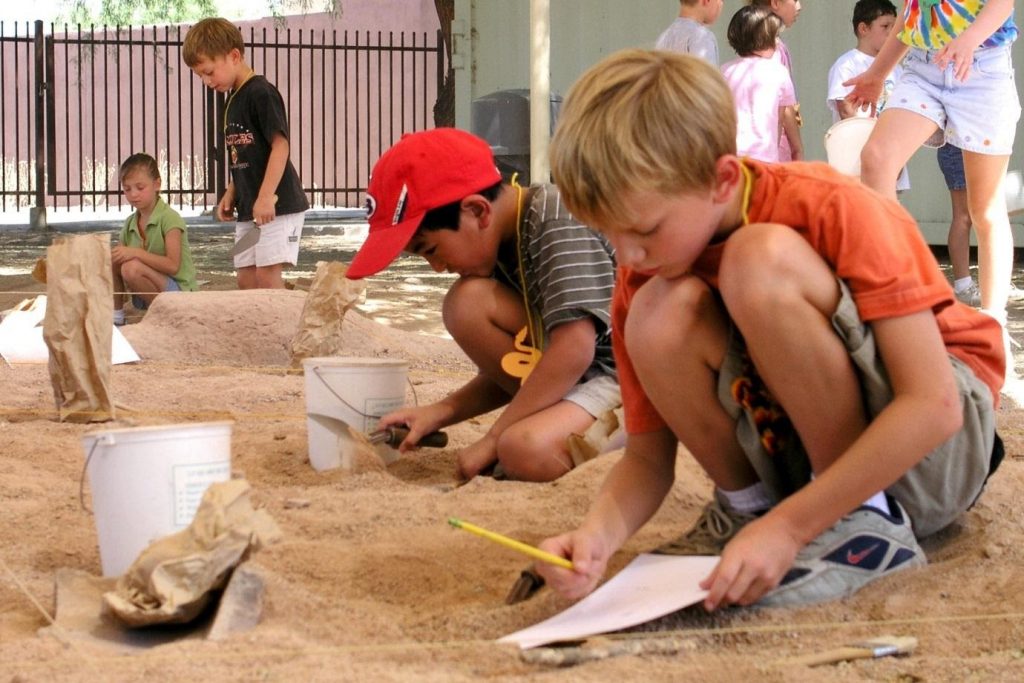
So, we went to the school garden where the teacher had hidden all the clues under the fossils we made a few days earlier. They gave the children the first clue and, starting from there, they will solve all 25 subsequent riddles, some even very difficult.
We also have to perform tasks like a true archaeologist, such as brushing a large fossil on the sand that covered it. Even though I know the answer to the riddle, we have sometimes forced ourselves to keep quiet to let my brothers guess.
For this point, a ticket led us to a bucket where there was a part of the treasure we had been looking for so much. In the sand, there were cute rubber dinosaurs. They were really cute. The last ticket took us under a large tree with falling branches where we found our treasure. Inside the chest were a magnifying glass, a torch for each of us, and a diploma as a good archaeologist.
Looking at things through the magnifying glass is fantastic because you notice details that are not visible to the naked eye. The treasure hunt was a lot of fun, and we wanted an explorer kit.
Source: https://massivelyop.com/tag/the-game-archaeologist/
15. Learn about living fossils
Darwin coined this term to show a particular species of organisms, plants or animals, endowed with primitive morpho-anatomical and structural characteristics. Therefore, they are currently living beings but very similar to their ancestors.

It is the case of the opossum whose characteristics have remained similar to those of the existing specimens during the Cretaceous. For almost unchanged characters, their appearance despite the many environmental changes they have witnessed.
Even among plant species, there are examples of organisms that have changed little over the geological eras. It is the case with ginkgo Biloba, cycads, and ferns.
Source: https://www.treehugger.com/animals-that-are-living-fossils-4869302
16. Fossil tracking game
Referring to dinosaurs, the first thing that parents should teach children is about the concept of dinosaur fossils. Parents can find some plastic that looks almost fossilized and bury them in some places near the pellet or the tree. After that, let your baby find and explore by themselves.
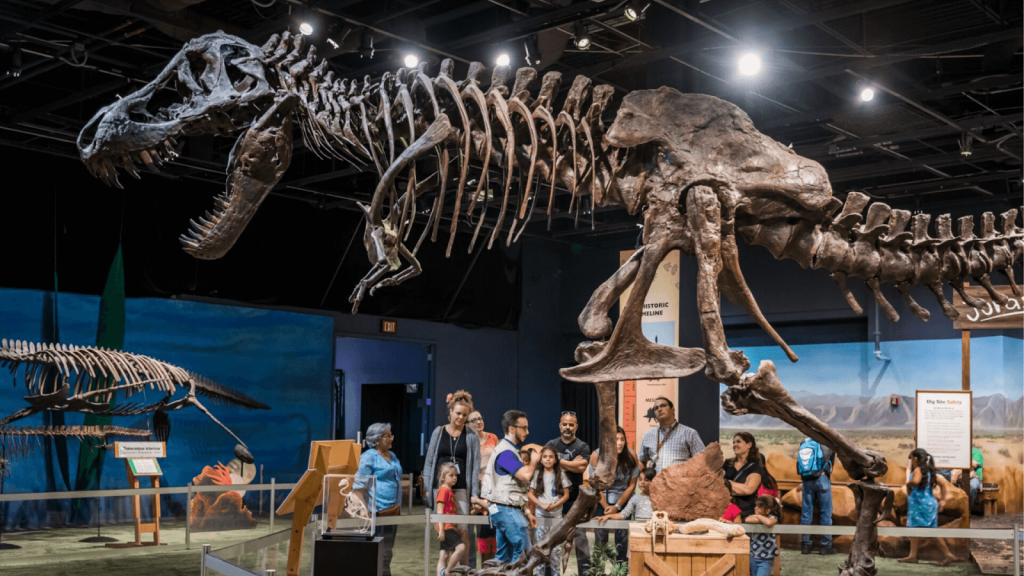
Source: https://www.amnh.org/dinosaurs/dinosaur-bones
17. Compare teeth of dinosaurs
Each dinosaur has a different tooth structure and that can be considered as a characteristic to classify them. For example, dinosaurs that ate teeth were often sharper than plant dinosaurs. Parents can look for some pictures of their teeth and let them compare. This activity also helps children understand more about fossil structures if parents cleverly integrate them.

Source: https://www.scholastic.com/teachers/articles/teaching-content/what-know-about-dinosaur-teeth/
18. Teach children about bacteria fossil
Among the oldest finds of this type in the world, there are also bacteria. Those found by a team of scientists from University College London date back to 3.770 million years ago. It is the discovery of one of the oldest testimonies of life on Earth.

19. Explore the habitat
Archaeologists often learn about dinosaurs by studying the surrounding fossils. Through it, they can know how dinosaurs move and their eating habits. Parents can apply this to teaching their children about the animal world or surrounding animals. There are some activities that parents can refer to.
– Tracing animals: Parents can work with your baby to find traces of animals left in the mud, soil, or sand. Through it, parents can analyze their size and type. Children and parents can take pictures of those traces as memories.
– Find animal shelters: Parents can explore the bird’s nest on branches or buildings. Thanks to the analysis of the nest of these animals, babies will know more about their size and living habits.

Source: https://www.nationalgeographic.org/encyclopedia/paleontology/
20. Sing songs about fossil
Music is an effective tool for young children to remember information. If parents want your baby to remember the names of all the dinosaurs, singing is an effective method. Just let your baby listen and sing along a few songs about fossils. They will quickly remember all the long names of dinosaurs.

Source: https://www.teacherspayteachers.com/Product/The-Fossil-Song-1799856
21. Even the vegetables have fossils
Even the plants will fossilize well. Cellulose can transform into carbon or other minerals such as silica, often keeping the structure intact. We have found a petrified forest in Arizona in which the trunks transformed into silica from truly spectacular tangles. The fern footprints found in coalfields are also famous.

Also, cereals and pollen seeds can fossilize and remain up to us. The palynology (the study of fossil pollen) and the carphologia (the study of fossil seeds) allow us to know the plant species present in the various ages of the Earth in a region. They allow us to correlate these data with the corresponding paleoclimates (climates ancient). The discovery of remains of plant organisms has allowed us to establish how the first plants on Earth were blue algae.
Source: https://newatlas.com/dickinsonia-strange-fossil-animal/51394/
22. Learn about insect fossils
Sometimes, it is the whole organism that has fossilized with no destruction of its parts. We speak of complete mummification. And it is a rare event that occurs only in situations where the animal has been trapped in ice, in a parched place, in a bog, or resin.
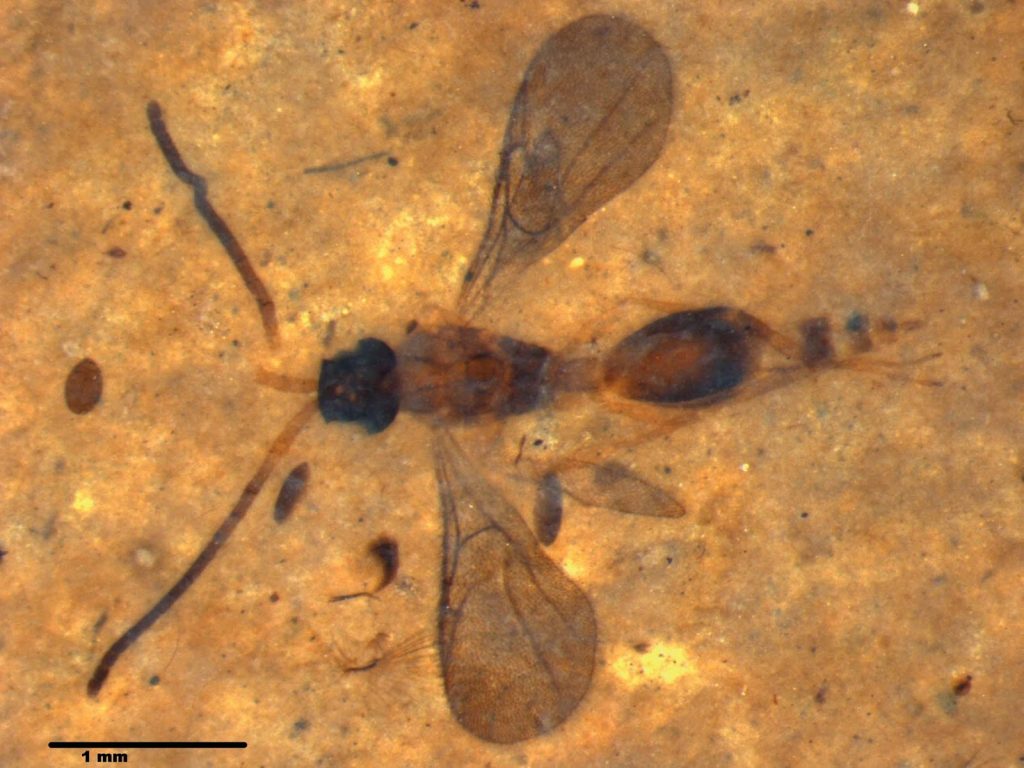
It is the case of the insects that can be found included in a fossil resin called amber. Among the remains of the most ancient animal specimens found, we cannot avoid mentioning the dinosaurs. Even the existence of mosquitoes, decidedly simpler than living beings, is dated far back in time.
Source: https://www.scientificamerican.com/article/mysterious-insect-fossil-gap-explained/
23. Dinosaur shaping
After knowing and knowing a lot of information about dinosaurs. Parents can create their dinosaurs with your baby. Materials used can be clay or paint, depending on your baby’s preferences.

While drawing or shaping dinosaurs, parents can ask some questions for your babies such as are you drawing or molding a carnivorous dinosaur or a plant-eating dinosaur? Is this dinosaur big enough? What color will you use? Does this species live in deserts, forests, or near the ocean? If your baby feels confused about the idea, parents can look for some dinosaur pictures for their baby to refer to while creating.
24. Make a fossil with children
The pleasure that fossils give is strange. Not everyone loves them because they are nothing but the remains of ancient creatures. If you think about it too long, you will end up wondering what you are doing with a petrified corpse in your hands. But we find them fascinating because they do not belong to our recent world, but come from a past.

For this experiment, you will need sand powder, chalk, shells, butterflies, or anything else you want to transform into a fossil. Denote that the objects are only used to leave a footprint and can be reused. Otherwise, prepare two better disposable containers, brushes, and a small, willing paleontologist.
Pour the sand into a container and play. Then moisten with water level and thoroughly impress the objects to leave an imprint. Prepare the plaster by mixing it with water. Pay attention to mix away from children so as not to let them breathe the dust. Pour your plaster into the container with the sand and wait about half an hour for it to dry. Do not forget to make a hole with a straw if you want to hang it on the wall.
In the meantime, continue playing with the remaining sand. When the chalk is dry, you can remove it from the container and remove the excess sand with the help of brushes. It is the funniest part where little paleontologists pretend to discover a fossil and clean it up. If the sand is wet, wait for it to dry to get rid of it more easily. The result will surprise.
Source: https://www.pbs.org/parents/crafts-and-experiments/homemade-fossils
25. Learn about koala fossils
The remains of the koala, a widespread marsupial in Australia, are rare. The evolution of this animal is still little known.

Source: https://www.savethekoala.com/about-koalas/history-koalas
26. Learn the history of fossils
The first dinosaur remains were probably first discovered in China in the fourth century but have been mistaken for bones of fantastic animals such as dragons.

27. Dinosaur fossil game
What is the procedure for creating our beautiful DIY paleontological scenery? We will need to equip ourselves with two abundant tablespoons of sand. Then mix with the cornstarch and water as required. If the mixture is too liquid, add more sand, and vice versa if it should be too solid.
Once we have the fake soil, we can bury the dinosaur skeletons and wait for the compound to solidify in the sun. Remember that you will have to wait for 24 hours. Once the whole thing has thickened, we call the children to report and begin digging, dusting, and exhuming the remains of our dinosaurs.
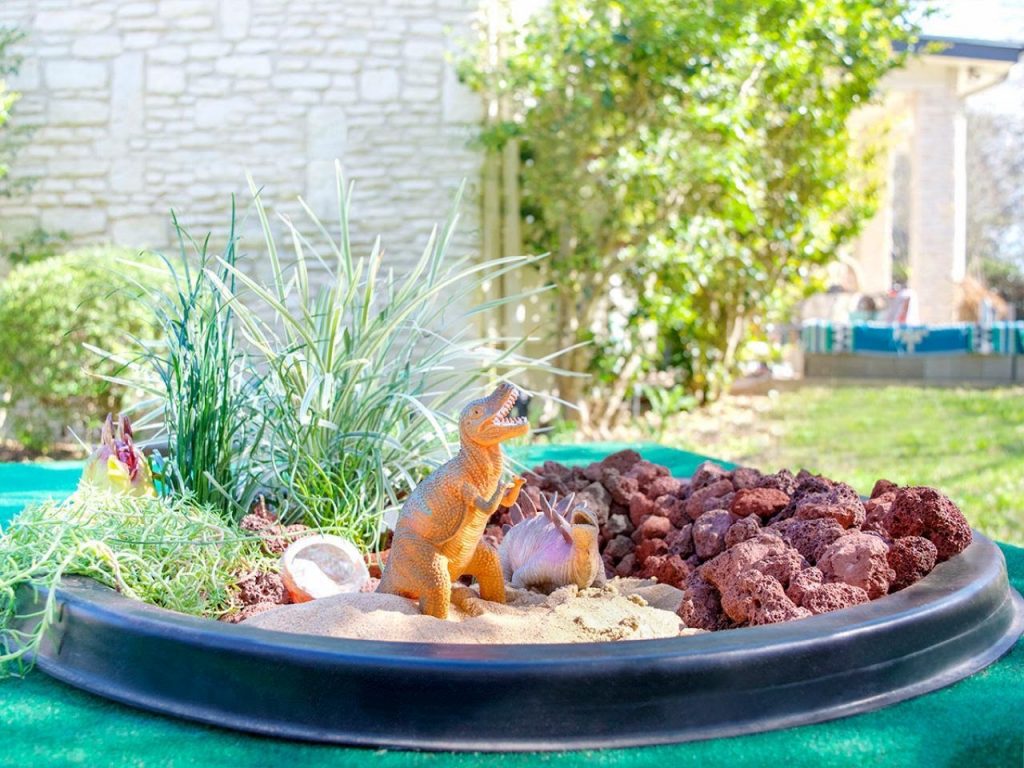
28. Inspiration for children in learning fossils
With younger children, we keep in mind all the objectives of sensory play. This game leverages all children to love the world of dinosaurs. Without giving particular verbal information, but by presenting the material and tools, we can do a glorious thing that will prove helpful later. Let’s create the image and a memory of an archaeological excavation that could be the basis for a lively and active interest in the study of history.

Of course, it all lies in the adult’s ability to prepare the tub thinking about the actual child who will enjoy it. The kids will direct and observe the activity so it can take place pleasantly and magically. In the game, players will not be rigid. Otherwise, they will observe if fatigue occurs to test how many artifacts to insert and how much to hide. There are some important aspects. As always, preparing the environment is everything.
Also, consider that the activity can be prepared and presented. But then the tray can be left at the child’s disposal for several days so they can dedicate it to the excavation when they want it. If the experience, instead of being stimulating, becomes boring, we will not have done a good job. It would be important to create a corner dedicated to Prehistory where it is made available for some beautifully illustrated books, toy dinosaurs, memories, and thematic cards.
With older children, and it will be wonderful if they could have more playful excavation experiences as children, we can create a situation that reproduces the work of the archaeologist with a certain degree of scientific accuracy.
The element of sensibility (visual, olfactory, and tactile stimulation) remains important and is all to the benefit of learning. But we can add scientific information about the excavation procedure, the analysis of the layers, the correct chronology, and the methods of archiving and classification of the finds.
Experience is even more helpful with older children. It does not exhaust that to say about the work of the archaeologist and the excavations. Children will start the study of fossils by talking about documentation and sources. After the experience and practice, it would be important to organize cards, lessons, nomenclature cards, and exercises in filling out finding cards.
Source: https://www.parentingscience.com/dinosaurs-for-kids.html
29. Prehistoric Sensory Tubs
A prehistoric sensory tub should have two or more levels because one principle of the excavation is precisely the stratigraphy. The ability to distinguish the different levels is following each other in chronological order. The top surface is the most recent creature. At the bottom, as you dig, are the oldest ones. The ideal is to find materials distinct and texture. In this model, we have river pebbles and a few centimeters of limestone or flint in all three layers.

For the first layer, some fragments of glazed pottery by breaking a grandmother’s cup and adding fragments of pottery, bricks, and tiles. They are the constant of any excavation. We can enrich it with some pearls of preferably blown glass, glass paste or semi-precious stones, and some coins.
For the second layer, assuming that it is prehistoric, we need tools of flint or other stone. We can find flint along the banks of rivers and streams, but any sharp or sharp broken stone will do. To find inspiration, you can do an image search on the web by entering flint tools.
For players who are not picky, the ideal would be to add bones, even just a couple of chicken legs, just boil the bones to clean them perfectly. Alternatively, in the shops, there are various types of plastic skeletons.
Finally, sand and seashells can be added to both layers. The third layer could be the one before the appearance of man and could contain bones and fossils.
Source: https://www.villageplaypa.com/post/family-fun-friday-prehistoric-sensory-bins
30. Fossil Party
We have a warning for all parents who are approaching the development of a themed party for the first time. We cannot improvise this party a week before. There we need a lot of preparation and study.

All the design must be planned very well in advance to study every detail and to calculate the shipping times of the material if it comes from overseas. Sometimes, it can be very long. And what is needed to print, cut out, assemble, color, and paste?
When studying a fossil theme, it is necessary to analyze it carefully, examining the space available, the age of the child, and his predispositions. We must identify ways to follow. Pinterest was an enormous help in this. It is a tremendous source of inspiration. Using keywords well, it is possible to find infinite ideas, images, special ideas, and almost all the decorative fossil models you need.
For example, by looking online, we found that most of the dinosaur-themed parties are almost all made for small children. So, we had to find a different interpretation suitable for children on the threshold of the first grade with curious and lovers of experiments.
Source: https://www.survivingateacherssalary.com/fossil-or-dinosaur-birthday-party-ideas-on-a-frugal-budget/

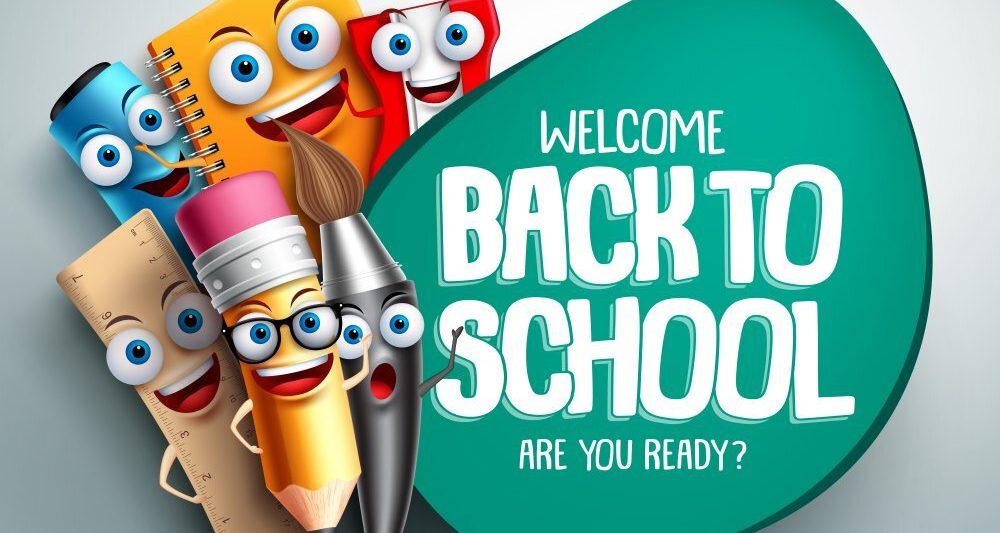
 Disney Creative Writing for Kids
Disney Creative Writing for Kids
Leave a Reply